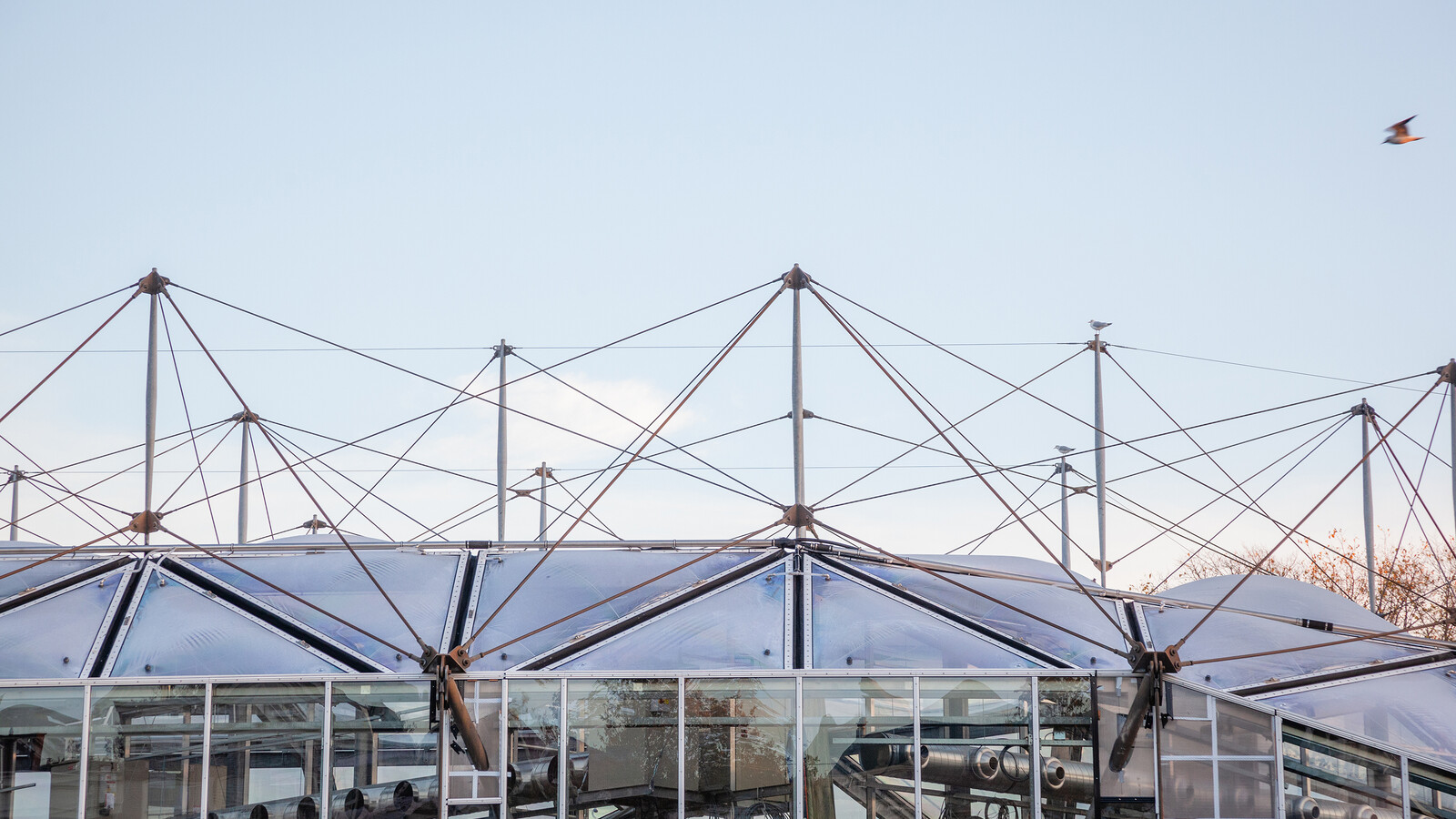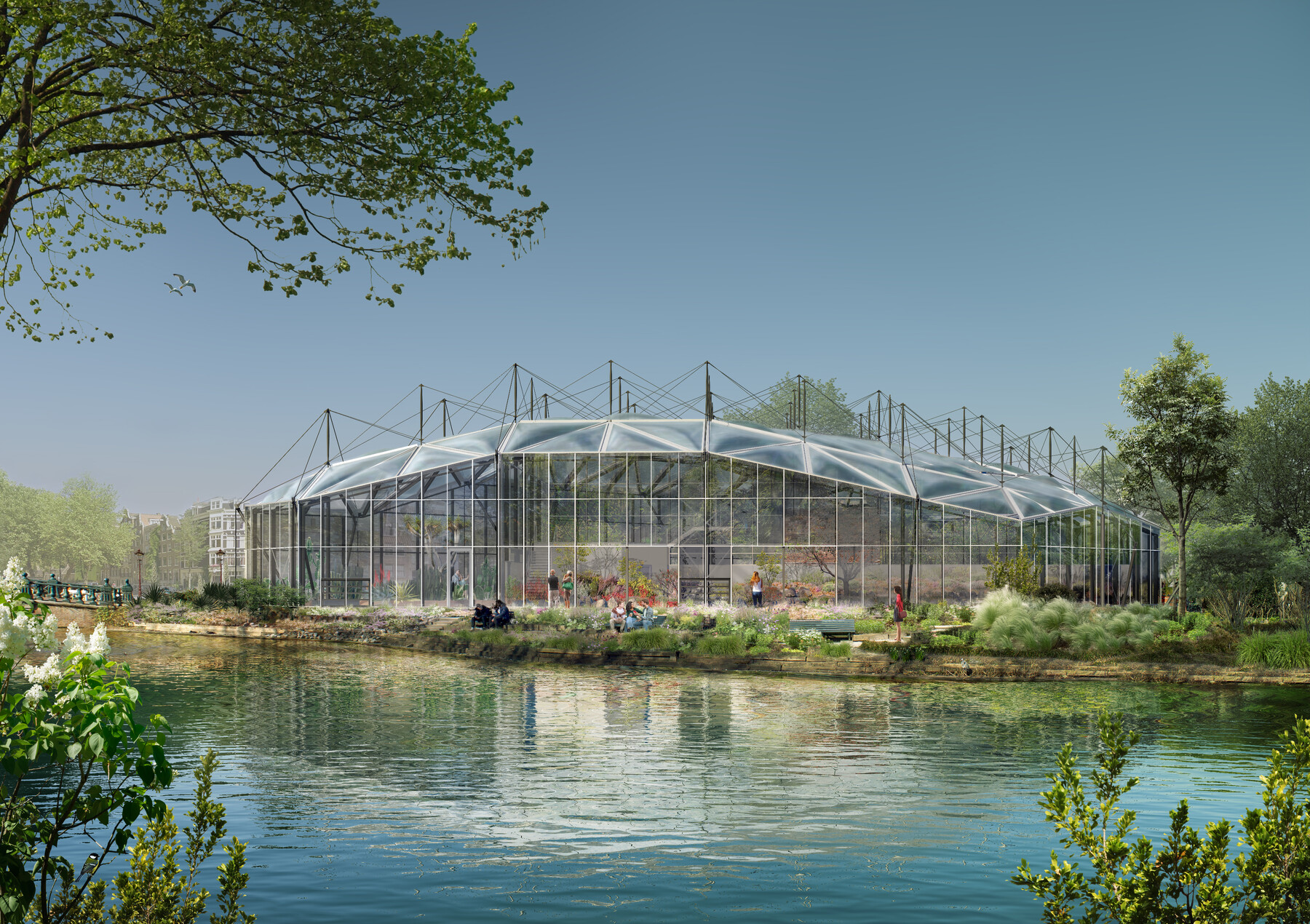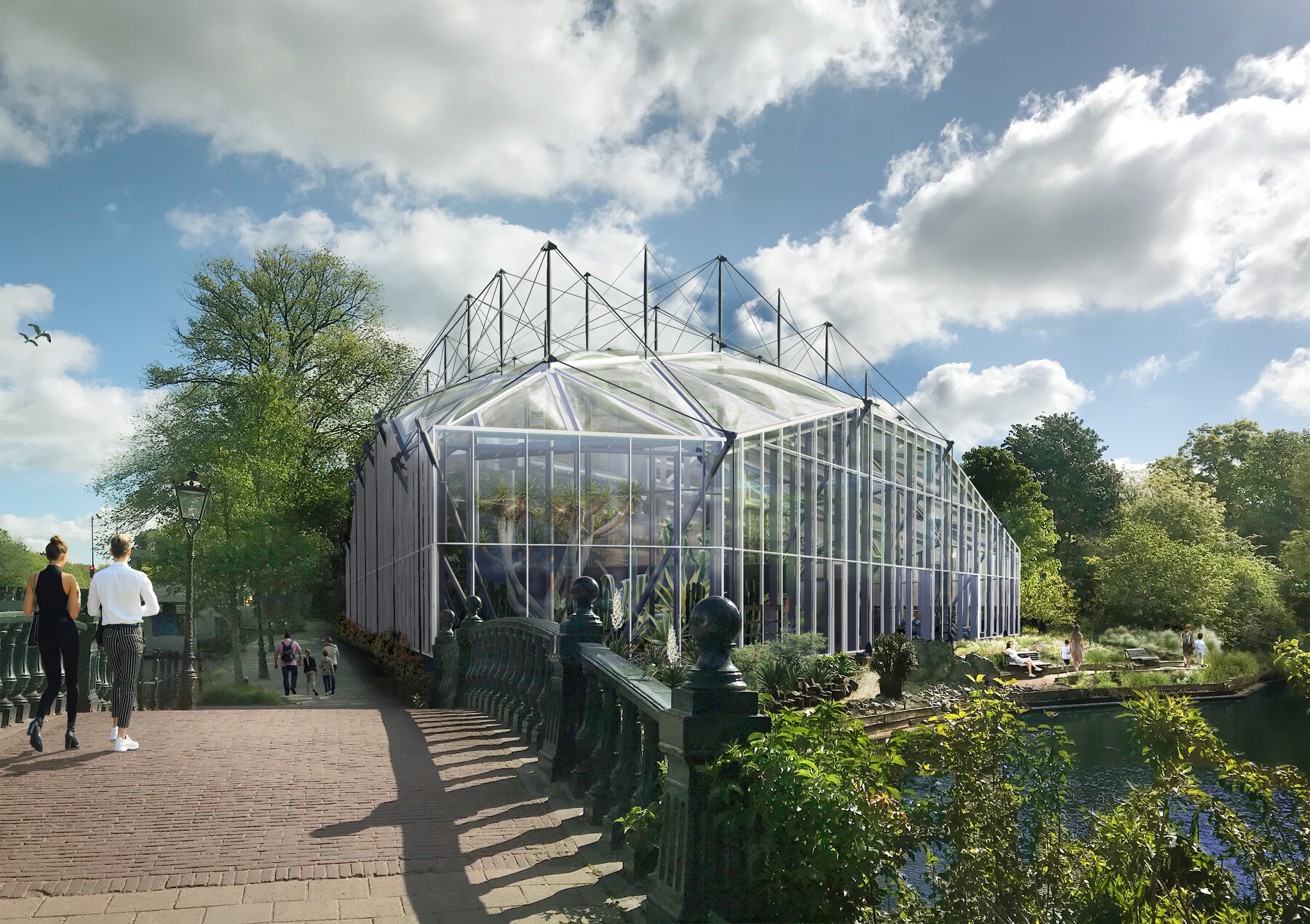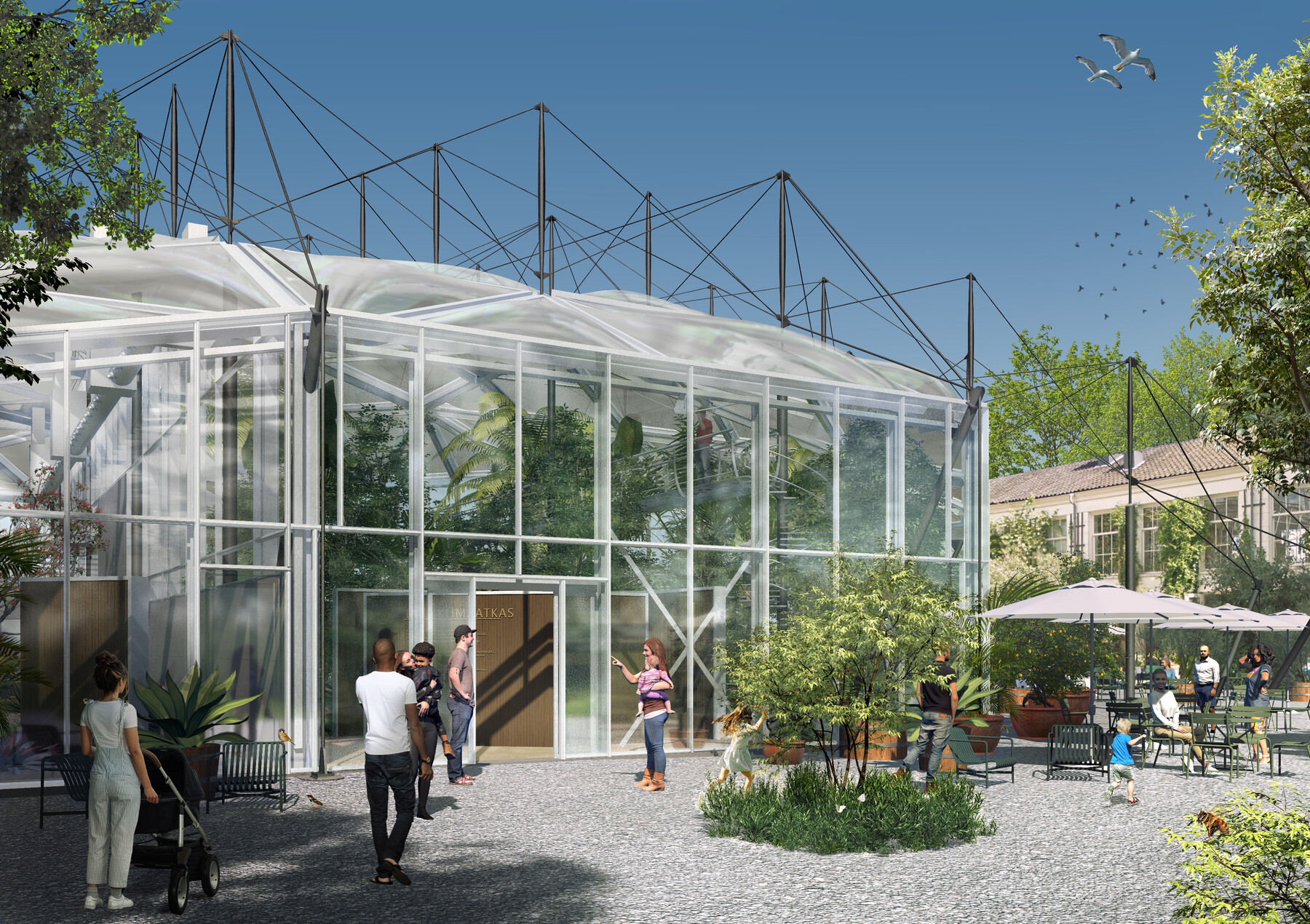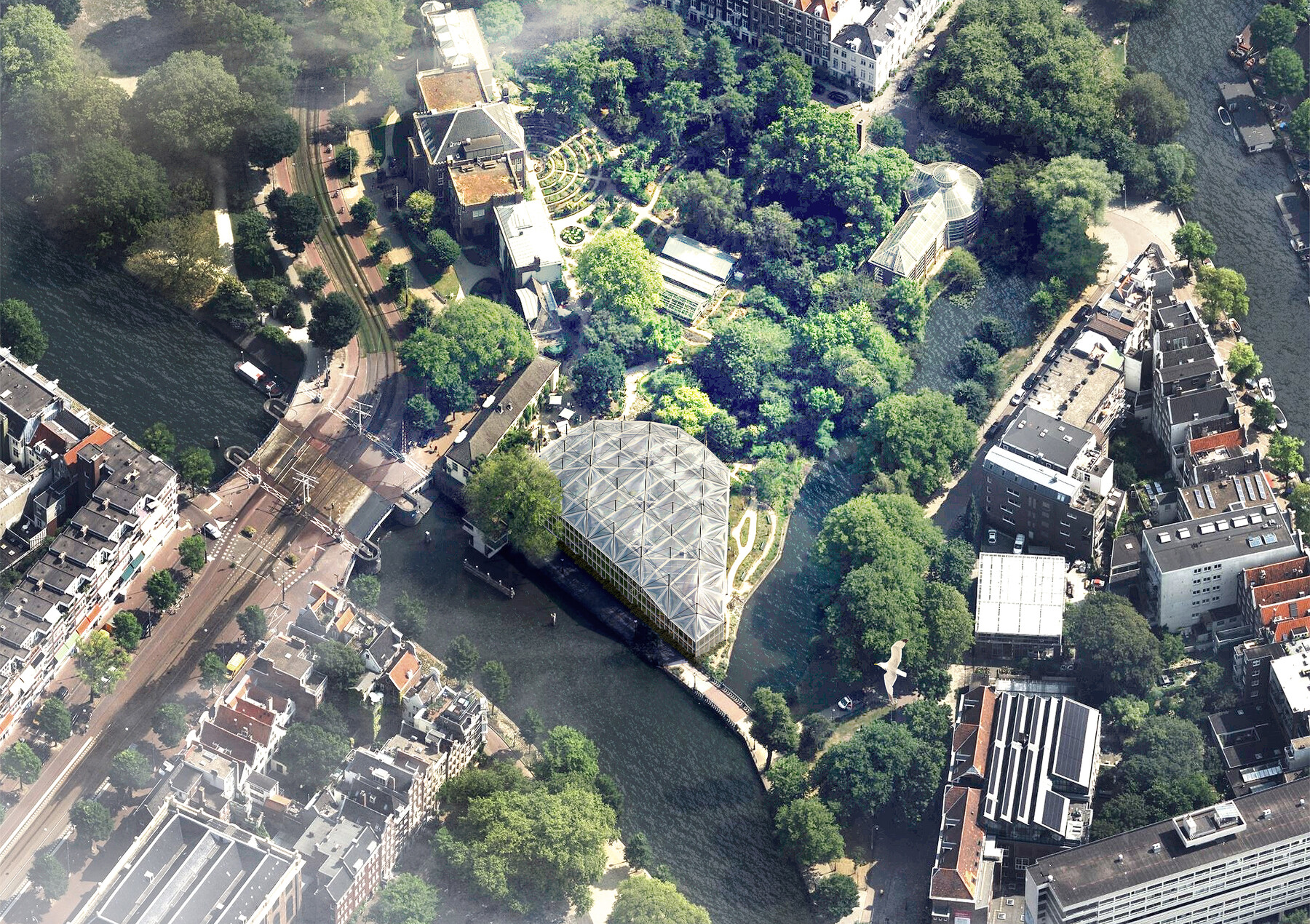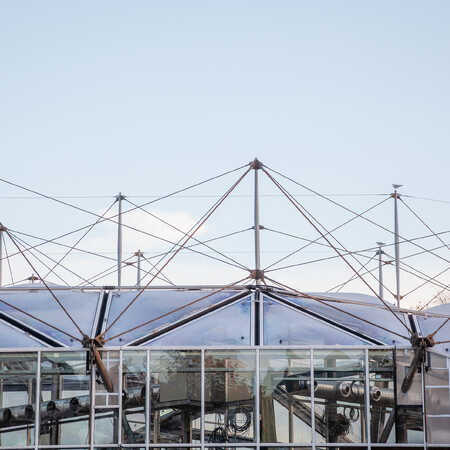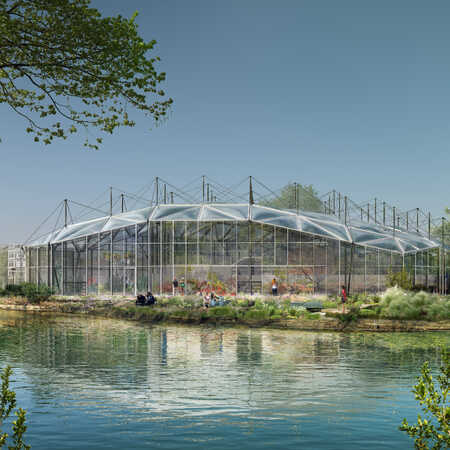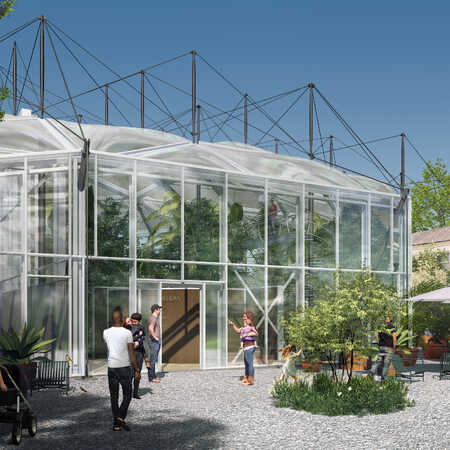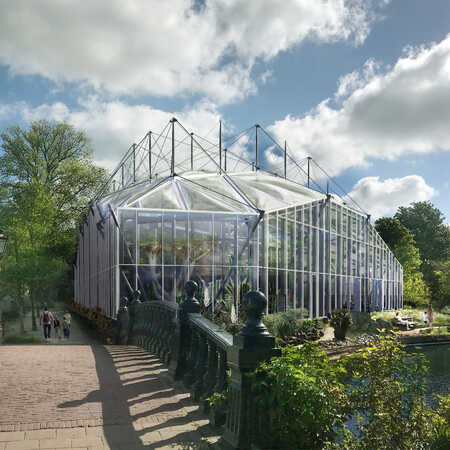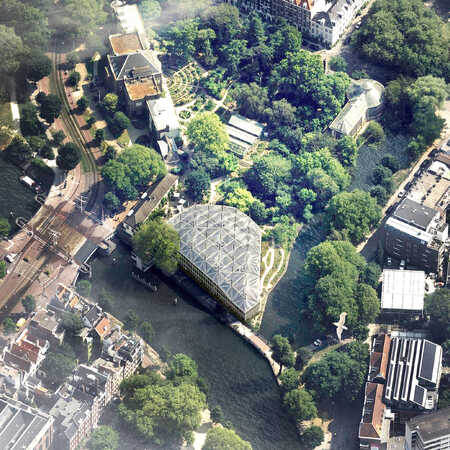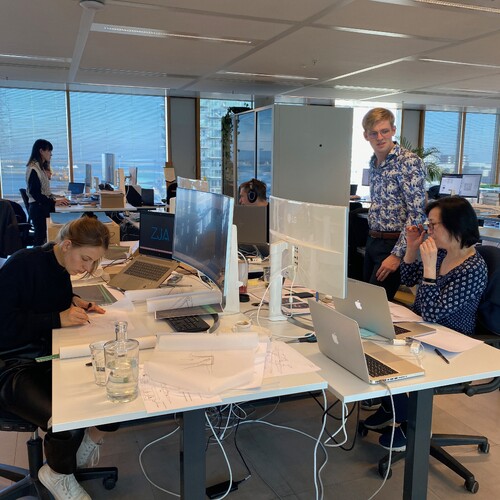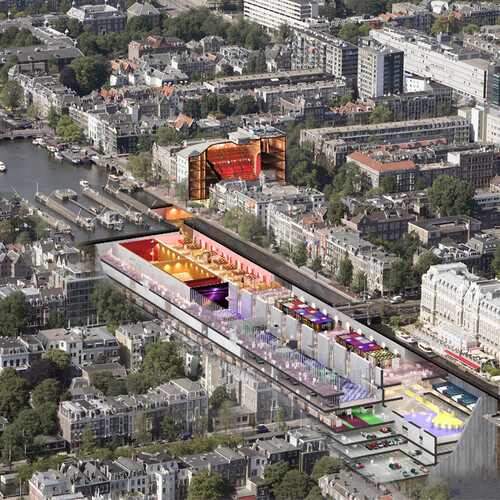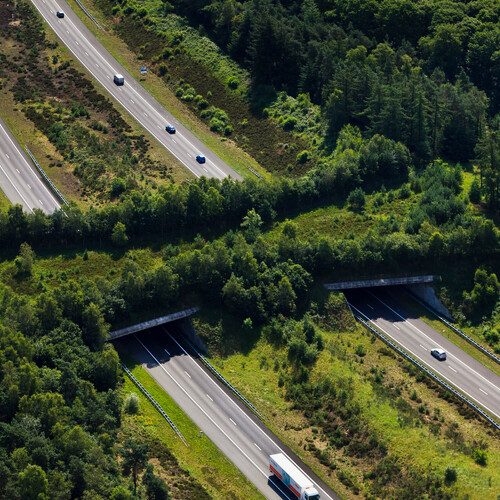Eye-catcher made of steel and glass
The Climate Greenhouse of the Hortus Botanicus on the Nieuwe Herengracht has been a striking building in the centre of Amsterdam since 1993. With its ingenious combination of parts from production greenhouses in Westland and an external skeleton that gives the structure its strength via tension rods on the roof, it was a flexible and functional design that gave the famous plant collection a new home thirty years ago. A centuries-old institution, surrounded by historic buildings, gained an attractive contemporary addition, which became a popular attraction for both visitors and Amsterdam residents. But the present poses new demands. With this renovation, the Hortus intends to create a fully sustainable greenhouse that provides optimal shelter for the plant collection in a future-proof location that tells the story of biodiversity. As in 1993, ZJA has provided the architectural design.
